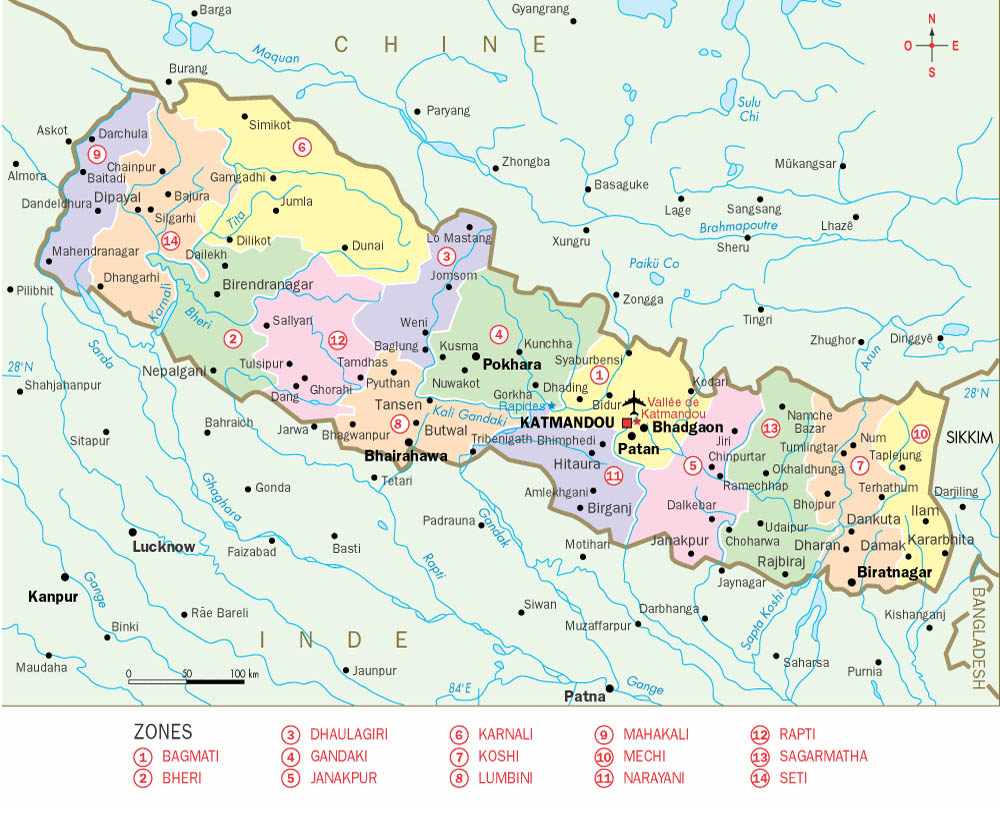
Social indicators
| Population growth rate (average annual %) | 1.1 (2023, World Bank) |
| Urban population growth (annual %) | 3.2 (2023, World Bank) |
| Rural population growth rate (average annual %) | 0.6 (2023, World Bank) |
| Urban population (%) | 22 (2023, World Bank) |
| Population aged 0-14 years (%) | 29 (2023, World Bank) |
| Education: Primary-secondary gross enrolment ratio (f/m per 100) | 0.95 (2022, World Bank) |
| Sex ratio at birth (male births per female births) | 1 (2022, World Bank) |
| Life expectancy at birth (females and males, years) | 70 (2022, World Bank) |
| Infant mortality rate (per 1,000 live births) | 23 (2022, World Bank) |
| Fertility rate, total (births per woman) | 2 (2022, World Bank) |
Economic Indicators
| GDP per capita (US$) | 1,324.0 (2023, World Bank) |
| GDP growth rate | 2.0 (2023, World Bank) |
| Adjusted net national income (current US$) (Millions) | 33,841.99 (2021, World Bank) |
| GNI per capita, Atlas method (current US$) | 1,370 (2023, World Bank) |

Nepal, officially the Federal Democratic Republic of Nepal, is a landlocked country located in South Asia.
Country’s Environmental Profile
Nepal, is a landlocked multiethnic, multilingual, multi-religious country. It is situated north of India in the Himalayas, in the region where, about 40 to 50 million years ago, the Indian subcontinent has crashed into Asia. Nepal is bordered by the Tibet, an Autonomous Region of China, to the north and India in the east, south and west. The country is rectangular in shape, approximately 885 km long boarded by Mechi River in east and Mahakali River in west and roughly 200 km tall north to south.
Nepal can be divided broadly into three ecological zones: the lowland, the midland and the highland. The altitude of the Himalayan Region (the highland) ranges between 4877 m – 8848 m, It includes 8 of the highest 14 summits in the world, which exceed altitude of 8000 meters including Mount Everest. The mountain region accounts for about 64 percent of total land area where as the lowland Terai, the flat river plain of the Ganges with a belt of marshy grasslands, savannas, and forests, occupies about 17 percent of the total land area of the country
The country has diverse climatic conditions. It is generally cold in the mountainous region, mild weather in the hills, and warm in the plains and has an average rainfall of 1,500 -2,500mm. A total of 118 ecosystems have been identified in Nepal, including 112 forest ecosystems, four cultivation ecosystems, one water body ecosystem and one glacier/snow/rock ecosystem. These ecosystems range from the tall grasslands, marshlands and tropical and sub-tropical broadleaf forests along the Tarai and Siwalik Hills to the sub-tropical and tropical broadleaf and conifer forests in the Middle Mountains.
Nepalese wetlands have very significant ecological significance, as they provide habitat for many threatened and endemic species of flora and fauna and serve as resting places for many migratory and globally threatened birds. They are known to support more than 20,000 waterfowls during peak migratory periods between Decembers to February
The country occupies about 0.1 percent of global area, but harbors 3.2 percent and 1.1 percent of the world’s known flora and fauna, respectively. Diversity of birds, bryophytes, mammals, and butterflies is especially high. A total of 284 species of flowering plants, 160 animal species, species of bird, and 14 species of herpetofauna are reportedly endemic to Nepal.
Nepal’s flora and fauna can be divided into four regions:-
| Threatened species | 100 (2014) |
| Forested area (% of land area) | 25.4 (2012 |
| Proportion of terrestrial and marine areas protected (%) | 22.9 (2014) |
| Population using improved drinking water sources (%) | 88.0 (2012) |
| Population using improved sanitation facilities (%) | 37.0 (2012) |
| CO2 emission estimates (000 metric tons and metric tons per capita) | 4334/0.2 (2011) |
| Energy supply per capita (Gigajoules) | 9.0 (2012) |
Principal Environmental Laws
Guidelines, manuals, codes and standards
MEAS signed
Environmental Related Reports
Major Environmental Issues:
Important Web sites